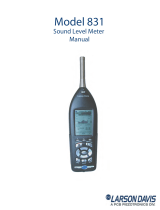
i
Operations Guide 930260A CyberData Corporation
Contents
Chapter 1 Product Overview 1
1.1 How to Identify This Product ..............................................................................................................1
1.2 Typical System Installation ...................................................................................................................2
1.3 Product Features .....................................................................................................................................3
1.4 Supported Protocols ..............................................................................................................................3
1.5 Supported SIP Servers ...........................................................................................................................3
1.6 Product Specifications ...........................................................................................................................4
1.7 Dimensions .............................................................................................................................................4
Chapter 2 Installing the VoIP Indoor Intercom 5
2.1 Parts List ..................................................................................................................................................5
2.1 Intercom Setup ........................................................................................................................................6
2.1.1 VoIP Intercom Connections .......................................................................................................6
2.1.2 Connecting a Device to the Auxiliary Relay ...........................................................................7
2.1.3 Identifying the VoIP Intercom Connectors ..............................................................................8
2.1.4 Call Button and Indicator Light ................................................................................................9
2.1.5 Network Connectivity, and Data Rate ..................................................................................10
2.1.6 RTFM Switch Jumper ...............................................................................................................11
2.1.7 Adjust the Volume ....................................................................................................................13
2.1 Configure the Intercom Parameters .................................................................................................14
2.1.1 Log in to the Configuration Home Page ................................................................................15
2.1.2 Configure the Network Parameters ......................................................................................17
2.1.3 Set up the Intercom ...................................................................................................................19
2.1.4 Configure the SIP Parameters .................................................................................................22
2.1.5 Configure the Sensor Setup Parameters ................................................................................26
2.1 Upgrade the Firmware and Reboot the Intercom ...........................................................................28
2.1.1 Reboot the Intercom ..................................................................................................................31
Appendix A Mounting the Indoor Intercom 32
A.1 Mount the Intercom ...........................................................................................................................32
Appendix B Setting up a TFTP Server 34
B.1 Set up a TFTP Server ...........................................................................................................................34
B.1.1 In a LINUX Environment ........................................................................................................34
B.1.2 In a Windows Environment ...................................................................................................34
B.1.3 In a Solarwinds Server Environment ....................................................................................34
Appendix C Troubleshooting/Technical Support 35
C.1 Frequently Asked Questions (FAQ) .................................................................................................35
C.2 Documentation ....................................................................................................................................35
C.3 Contact Information ............................................................................................................................35
C.4 Warranty ...............................................................................................................................................36
Index 37





















